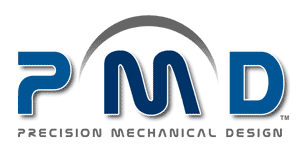Molded part Design Tip…
“Check your work…" as our math teachers used to say…
When I design a molded part, I almost always create a rough design of the mold tooling geometry.
I have heard many tales from design engineers receiving molded parts that were *mostly* as expected, but with different draft angles (maybe in the opposite direction as anticipated), maybe different parting lines here and there, etc. This never sounded good to me. As I learned to design molded parts early on, I created these mock-up molds as a sanity check for myself. Frankly, I was nervous about how well I could “imagine a reverse image” of the part in my head. The mock-up tooling approach for my molded parts was born…
As I began to create molded parts with more and more complex surfaces, this mock-up tooling became an essential part of the design process. I wouldn't live without it for complex parts.
When presented to the mold vendor, these cad files greatly simplify the process of communicating how the part is to be molded. All of the parting lines, draft angles, pull directions, need for side pulls, etc. become crystal clear to all of the parties involved on a project. I want to make life as easy as possible on the mold vendor, and not leave anything up to interpretation, or cause them to have to figure out things that have already been thought through.
The mold vendor typically responds with where they will add various details to the molded part for approval. (Gates, injection pins, etc.). By starting with the basic mold geometry, the discussion is off and running immediately.
This mock-up mold tooling also helps keep the designer honest. “Can this molded geometry *really* be fabricated the way I was intending…?”.
My math teachers would be proud, this is how I always "check my work" for molded components…

